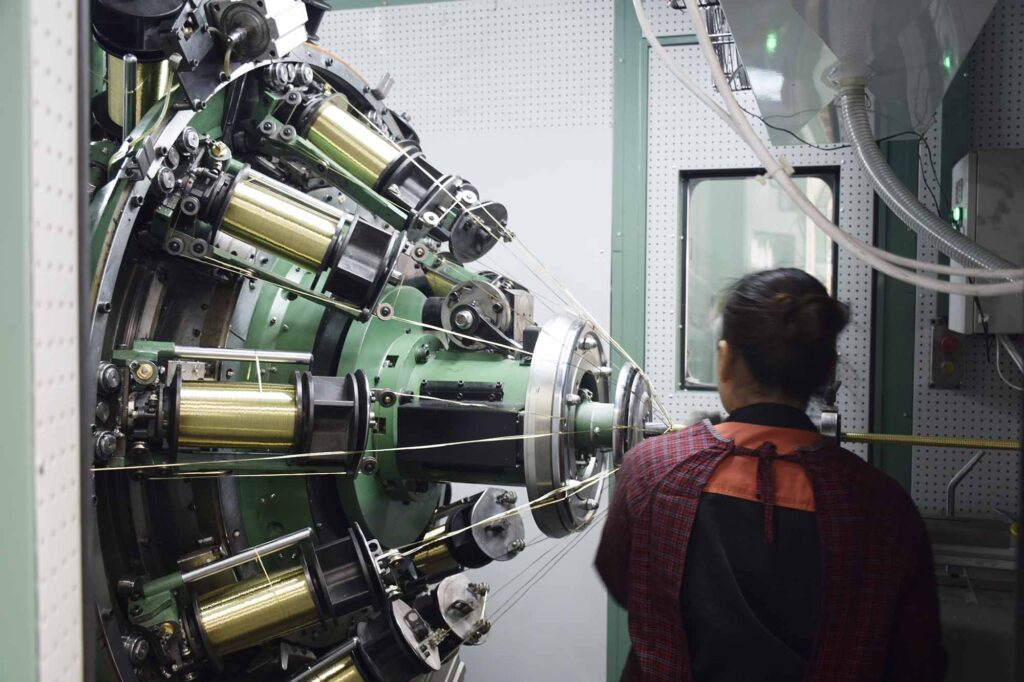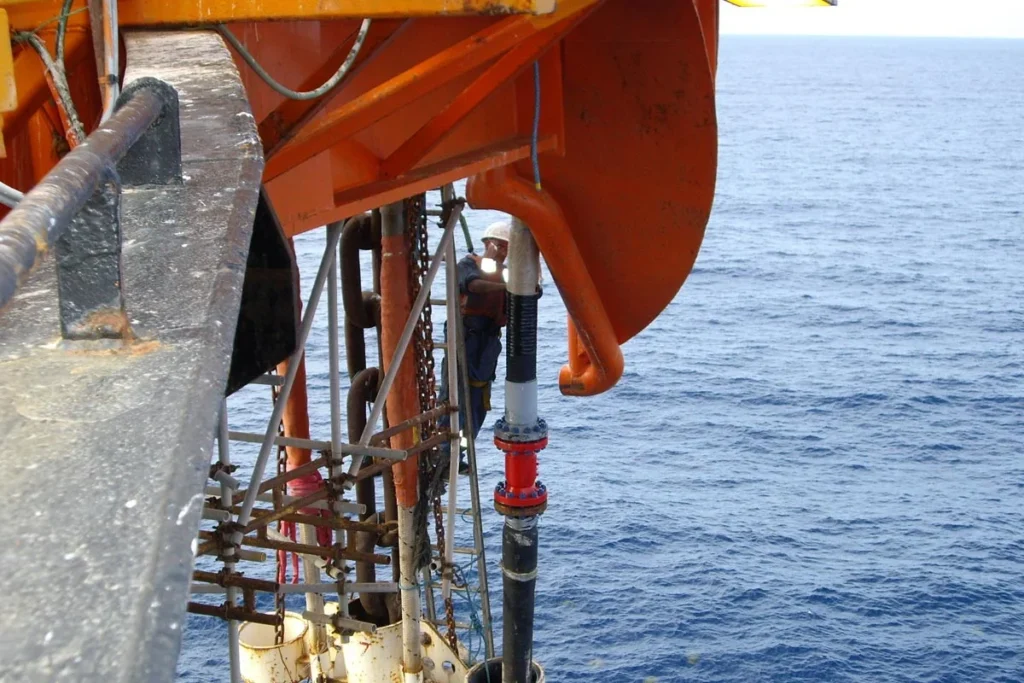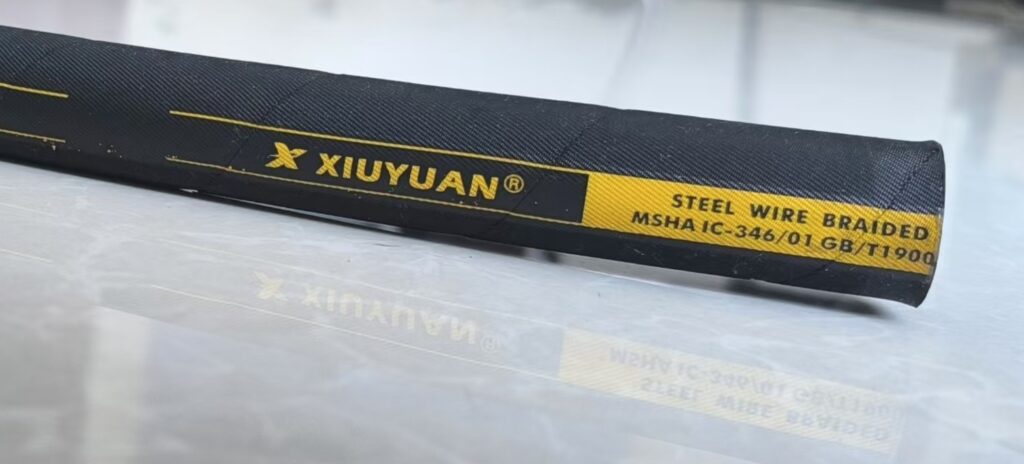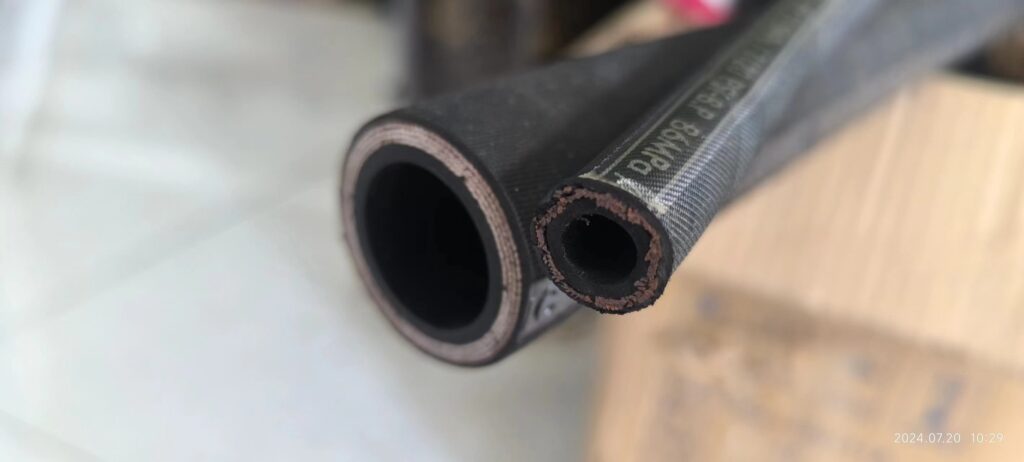The installation and cleaning of hydraulic hoses requires professional operation, improper operation will reduce the service life of the hoses, please be careful.
Installation
By the construction machinery design of the structure of space and other factors, the requirements of the hose in the maximum pressure conditions to work continuously and stably need to have a smaller bending radius, but should not be used in the case of less than the minimum bending limit radius of the hose, the hose bending radius reduced by 20%, can reduce the hose 90% life, the general requirements of the bending radius R ≥ 10D (D for the outside diameter of the hose), in order to ensure that the hose will not be too small Bending radius, too much pressure loss, while the steel wire reinforcement layer will not be damaged by the change in angle; avoid bending, excessive bending near the joint, the hose joint to the start of the bending straight section length should be greater than 1.5 times the outside diameter of the hose, bending very close to the joint, will lead to a decline in the pressure level of the hose, seriously affecting the service life of the hose.
When tightening the joint nut, the hose should not be twisted, excessive twisting of the hose will shorten the service life of the hose, if the twisting of the hose cannot be avoided, the twisting angle should not exceed 5°, because excessive twisting of the hose will damage the hose reinforcement layer, when the twisting increases by 5° each, the service life of the hose will be reduced to 70% of the original life.
Layout hose to avoid S-shaped bending, because S-shaped installation will lead to excessive movement of the hose, local pressure loss increases, shortening the service life. The hose shall not bear the axial force, which will damage the connection between the joint and the hose.
Friction between hose and hose or hose and body can cause local damage to the hose, resulting in rusting of the exposed steel wire layer and a decrease in pressure resistance, which will eventually lead to bursting of the hose. For the easy to produce friction parts, must take protective measures to avoid mutual friction between the hose to cause damage to the outer rubber layer, usually in the hose body additional protective spring or casing.
Cleaning
The inside of the hose is prone to enter dust and other fine contaminants, resulting in hydraulic system contamination.
Cleaning method of the hose: on the basis of compressed air blowing The hose should be flushed with hydraulic oil, and the flushing should be done with intermittent variable flushing. After the hose is flushed, use plastic cover or plastic bag to seal both ends of the hose. After the hose is flushed, the ends of the hose are sealed with plastic caps or plastic bags, and finally the hose is put into the storage box to prevent dust from causing secondary contamination. Second contamination. Always take samples to test the contamination degree of hydraulic oil for cleaning. The contamination degree of hydraulic oil particles should reach NAS9 standard.
When cleaning hoses, medical gloves or oil-resistant rubber gloves are required to avoid contamination of the hydraulic system.





